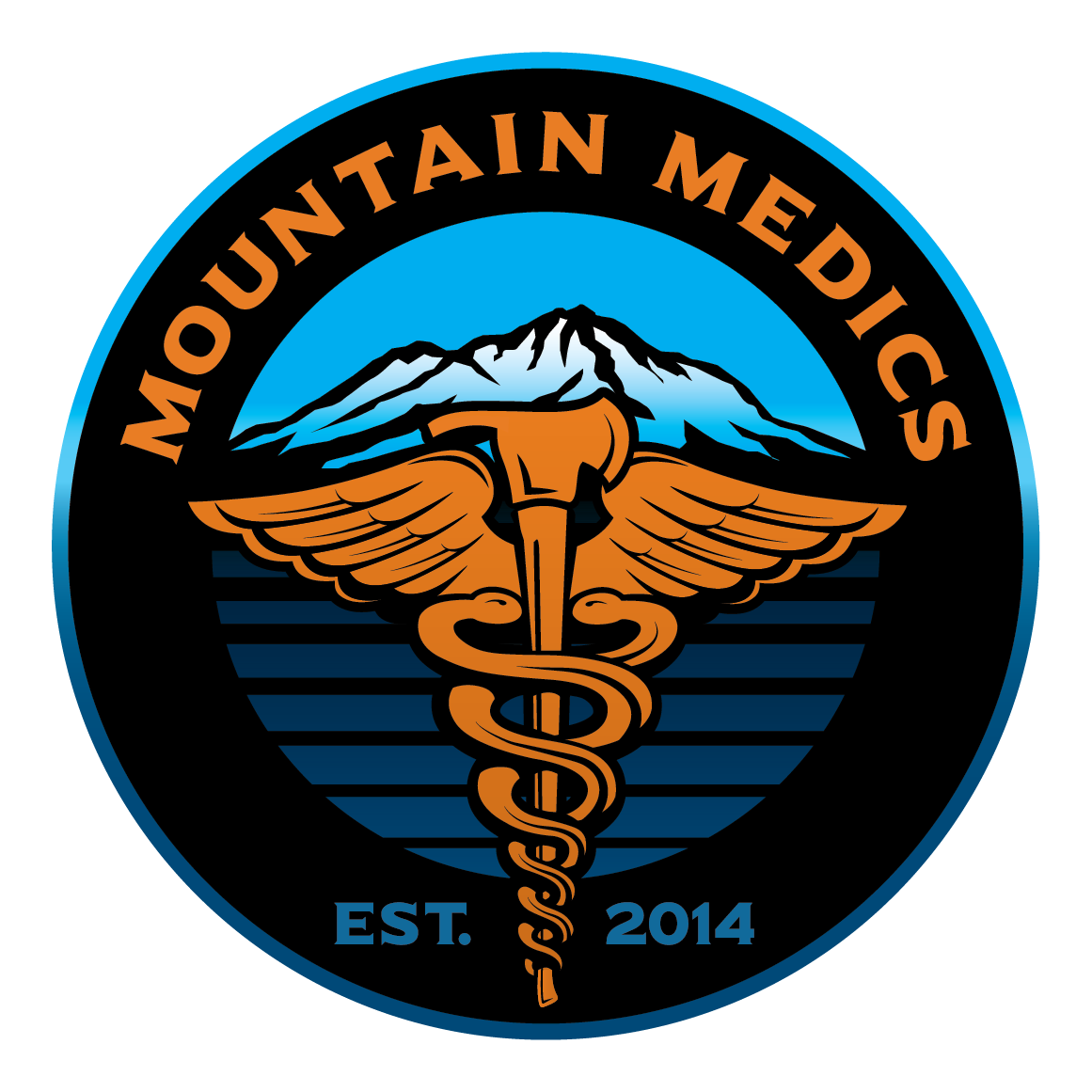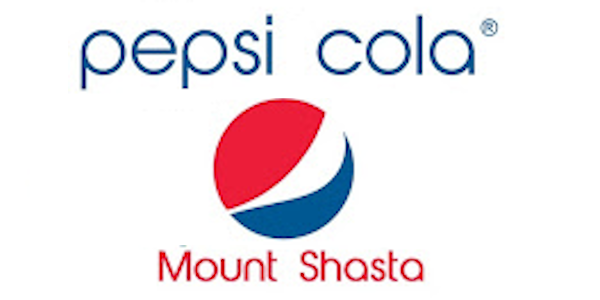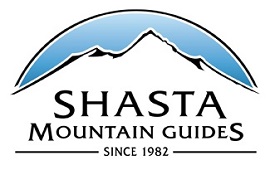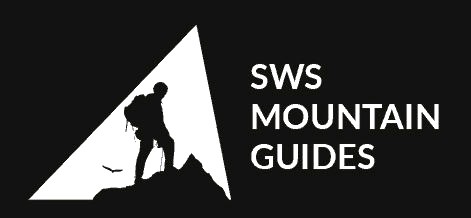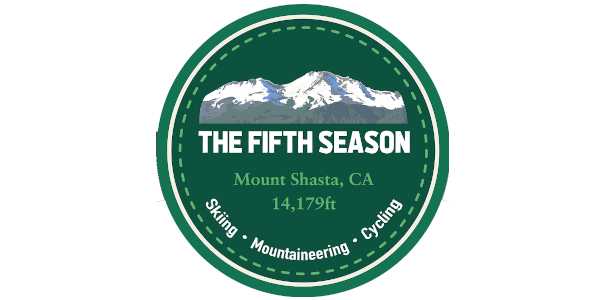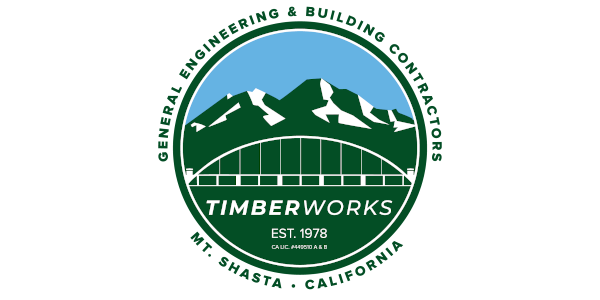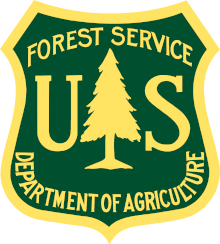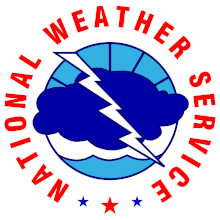
"A climb of Mt. Shasta is a very special experience. It presents each individual with the unique opportunity to visit the Mt. Shasta Wilderness, part of the National Wilderness Preservation System...We encourage you to enter into the spirit of wilderness and humbly and carefully make your way through this landscape, ever mindful of the special privilege you have to realize yourself as a creature in harmony with wildness, pursuing the challenge and reward of personal growth. On your journey to the summit, travel lightly and quietly on the land. Experience the timelessness of rock and ice, the dormant volcanic energy of a sleeping giant, and the indifference of eternity. Come prepared to climb a major mountain."
-George Duffy, retired Climbing Ranger
Greetings!
Welcome to the Mt. Shasta Climbing Advisory ---------------------------------------------------------------------------------
A couple notes for the Mt. Shasta Wilderness Area...
Dogs are NOT allowed anywhere in the wilderness OR on Sierra Club Property. Please respect this rule and know where the boundaries are. The Old Ski Bowl is a great place to take your dog that is outside the wilderness. Sun Bowl and Powder Bowl areas are Sierra Club property and dogs are NOT allowed in those areas either. There is a map posted at all trailheads to help educate oneself of the boundaries. Thank You!
Wilderness Permits are required to enter the wilderness. They are free and availabe at all OPEN trailheads or at the Mt. Shasta and McCloud Ranger Stations. A summit pass is required to go anywhere above 10,000 feet, even if you do not plan on going to the summit. They are $20 for a 3-day pass or $30 for an annual and available for self issue at all OPEN trailheads, The 5th Season or at the ranger stations (Mt. Shasta/McCloud). The annual pass is only availabe at the ranger stations during business hours.
Lastly, it is REQUIRED to packout your human waste, aka - feces, excrement, poop :) Free human waste packout bags are supplied for you and are availabe at all trailheads and ranger stations, as well as The 5th Season and Shasta Base Camp. Please also be mindful of your trash while camping in the wilderness. Food scraps, match sticks, micro trash such as wrapper tear off's of bars, etc. all need to be packed out. The rangers find way to much of this stuff. Leaving your gear and food or trash out in an exposed manner while you venture away from your camp is not acceptable. Ravens, pine martens, squirrels and WIND will spread it far and wide. Not cool...
Thank you for obeying these simple rules and enjoy your Mt. Shasta Wilderness experience!! If you have any questions, don't hesitate to call the Mt. Shasta Ranger Station front desk at 530-926-4511 or The Climbing Rangers at 530-926-9614.
Have a great day!

USFS Mt. Shasta Climbing Advisory - SPRING 2013
CLIMBERS! YOU WILL NEED THE FOLLOWING MANDATORY ITEMS:
♦Wilderness Permit, Summit Pass, and Human Waste Pack-out Bags: you can get all of these for self issue at all the trailheads or at the Mt. Shasta Ranger Station 24/7. The Mt. Shasta Ranger Station is open Monday through Friday from 8-4:30pm. Annual summit passes are available for $30 (good Jan. 1 – Dec. 31) at the Mt. Shasta and McCloud Ranger Stations during business hours and at the Fifth Season in Mt. Shasta and REI Sacramento. Regular summit passes (3-days, $20) are available by self issue at all open trailheads, Mt. Shasta Ranger station 24/7, and during business hours at the Fifth Season, Shasta Base Camp or at various REI stores in the Bay Area and Sacramento. Reservations are not required.
Please click here for further information on wilderness permits/summit passes and other information...
------------------------------------------------------------------------------------------------------------
CONDITIONS & WEATHER: Please make sure to check the avalanche advisory also before climbing.
Conditions for climbing and skiing on Mt. Shasta are currently good, however that being said, good climbing conditions will likely not last long as they have in years past. The Heart, Helen Lake, the Catwalk on Casaval ridge all have exposed rocks currently. Once that spring sun starts blazing, it doesn't take long for the snow to melt. As the snow melts, rockfall increases and most routes become more dangerous and not as fun! Spring conditions can also cause loose-wet avalanches and is something to think about when you climb. Even though the avalanche danger may be low, a beacon, shovel and probe is a great idea. So... the best conditions this season will be in April, May and potentially June and July depending on late season storms and/or intense sun. Stay tuned as we'll update the advisory often with current conditions. Always feel free to call with specific questions!
September and October were warm and dry with September recording exactly zero precipitation. November remained warmer than normal with precipitation almost double normal values, 9.16" vs. 5.08". A local weather COOP observed the 2nd wettest November on record. December started out wet and warm, but temperatures cooled and brought snow to very low elevations. Since our avalanche cycle near Christmas, we've had a few small storms that brought some amounts of snow to the area, but did not produced any notable avalanches. January was below normal for precipitation with a long period of high pressure and sun that kept skiing conditions somewhat meager. We've had a few storms for 2013 that have brought us glimpses of wintery weather, but nothing to write home about! California and the Sierra Nevada have recorded the driest January and February on record. We currently have 5'-8.5' feet of snow above 6,500 ft. Since September 1st, Mt Shasta sits at 70% of normal, 24.60" recorded; normal 34.71". For 2013, we sit at 20% of normal with 3.90" recorded and 18.83" normal.
At a height of 14,179 ft. Mount Shasta is a high altitude peak, and it is common for climbers to experience acute mountain sickness (AMS) with signs and symptoms of nausea, headache, and lightheadedness. Despite being a common condition, AMS should not be taken lightly. It can quickly develop into the much more serious and deadly pulmonary or cerebral edema. Stop, take a break, and if symptoms do not improve, descend, descend, descend.
SELF RESCUE IS HIGHLY RECOMMENDED should one become injured or sick. Always check the weather forecast before you climb...
We recommend that you do not climb into deteriorating weather as many climbers have become lost, injured or died in poor weather.

Route Info:
Avalanche Gulch– John Muir Route (Regular Route) via Bunny Flat Trailhead: The avalanche gulch route is in good condition and hosts full winter conditions for climbing. This means increased avalanche danger, cold temperatures, possible post holing, short days and always the chance of poor weather. If choosing to climb this route, check the weather and avalanche advisory, and be prepared. Be careful where the Redbanks and upper Konwakiton glacier meet. The bergschrund there could be a possible hazard. Pay attention to the weather as you climb. Many climbers become lost or disoriented on the upper mountain in the event of incoming weather. Wandering off the wrong side of the mountain has happened to many and is guaranteed to compromise one's safety. The spring at Horse Camp is not running and the composting toilets are closed.; pack-out bags are mandatory for removing all solid human waste elsewhere on the mountain. Carry the Ten Essentials. Learn more about mountaineering skills by reading Freedom of the Hills (published by The Mountaineers) and practicing before your climb, or TAKE A SNOW SCHOOL CLASS. Three outfitter-guiding services offer classes and guided trips on Mt. Shasta, and their links are on our web page under "Links".
Casaval Ridge, Green Butte/Sargents Ridge via Bunny Flat Trailhead: Both of these ridge routes are in good shape. Though as inferred above, winter climbing on Shasta ups the ante and should not be taken lightly. These routes are famous for unrelenting wind and this year is no exception. While these routes are in good shape, be prepared and check the weather and avalanche advisory before you climb. Most people stick to the ridges proper, however there are a few variations on the upper portions of the routes that are subject to the climbers discretion. Both these routes will not hold snow/ice long. Rocks are already exposed on both routes and usually melt out quickly.
Cascade Gulch, Shastina and West Face via Bunny Flat Trailhead: Although many books list the Cascade route as easy, it also has a lot of exposure to crevasses where it crosses the upper Whitney glacier, even when minimized to ¼ mile. Glacier travel training is recommended. Crevasses could be shallowly buried this time of year. Shastina is covered in snow and hosts winter conditions. North winds can howl through Hidden Valley. If winds are expected, be prepared to batten the hatches and hunker down wherever you might camp. The West face is in good shape. Cross loading of slopes and wind slab formation is common on the West Face route during winter. Use caution.
Sand Flat Trailhead: CLOSED FOR SEASON. Please stop by the Mt. Shasta or McCloud Ranger Station for wilderness permits, summit passes and packout bags as well as climbing information
Ski Bowl Trailhead: CLOSED FOR SEASON. Please stop by the Mt. Shasta or McCloud Ranger Station for wilderness permits, summit passes and packoutbags as well as climbing information. The gate at Bunny Flat will likely close soon
..........................................................................................................................................................................................
PLEASE NOTE: NORTH AND EAST SIDE TRAILHEADS ARE CLOSED FOR THE SEASON. If you choose to climb from one of these trailheads below, you must pick up your summit pass, wilderness permit and human waste packout bags from either the Mt. Shasta or McCoud Ranger Stations.
..........................................................................................................................................................................................
Northgate Trailhead: CLOSED FOR SEASON One may still access this side of the mountain, however summit passes and wilderness permits are not available at the trailhead and must be purchased at the Mt. Shasta or McCloud Ranger stations. You can purchase during business hours or 24/7 at the self serve kiosk. The bathrooms are open however at the trailhead and packout bags are available inside. This route is in good shape. Crevasses may be shallowly buried from windy conditions and meager snow totals this season. One may drive to within approximately 4 miles of the trailhead. The road is rough and 4wd is advised.
Brewer Creek Trailhead: CLOSED FOR SEASON One may still access this side of the mountain, however summit passes and wilderness permits are not available at the trailhead and must be purchased at the Mt. Shasta or McCloud Ranger stations. You can purchase during business hours or 24/7 at the self serve kiosk. The bathrooms are open however at the trailhead and packout bags are available inside. The route is in good shape, but has only been viewed from afar. Over 15 miles of snow covered roads exist to the trailhead and a snowmobile is reccommended!
Clear Creek Trailhead: CLOSED FOR SEASON One may still access this side of the mountain, however summit passes and wilderness permits are not available at the trailhead and must be purchased at the Mt. Shasta or McCloud Ranger stations. You can purchase during business hours or 24/7 at the self serve kiosk. The bathrooms are open however at the trailhead and packout bags are available inside. This route is likely in good shape also, though only as been viewed from a distance. Over 9 miles of snow covered roads exists to the trailhead.
For more detailed info on trailhead access or route condition information, please call the Mt. Shasta Ranger Station front desk at 530-926-4511 or speak directly to a climbing ranger at 530-926-9614. Thanks
-------------------------------------------------------------------------------------------------------------

Horse Camp: The Horse Camp cabin and the surrounding property are owned and managed by the Sierra Club Foundation. The composting toilet and spring water are closed during the winter months, but are turned on during spring, summer and fall. The cabin is open year round and all are welcome, however one cannot sleep inside the cabin except in emergencies! Make sure you close the door when you leave... DOGS ARE NOT ALLOWED ON HORSE CAMP/SIERRA CLUB PROPERTY, AS WELL AS IN THE MT SHASTA WILDERNESS. PLEASE RESPECT THE RULES... THANK YOU!
ALWAYS check the weather before you hike or climb. Have a safe and enjoyable season.
If you would like more information, feel free to come by the Mt. Shasta Ranger Station for slide shows, pictures, or to speak with a ranger and/or our very helpful front desk personnel.
Tips: Climb early and descend early! This limits exposure to inclement weather (afternoon thunderstorm buildups are common) and allows plenty of time to descend before dark. Avalanche training along with a transceiver, shovel and probe are recommended in winter and spring! Get an alpine start (2-5am) and have an early turn around time around 12 to 1 pm. Proper equipment, clothing and training are a must. Helmets are recommended and expect rock or ice fall at all times. Mt. Shasta is a 14,000 ft. lightning rod and is frequently hit by lightning (usually in summer and fall months), so don’t push your luck with building thunderheads. Do not expect to be rescued. Rather, prevent rescues from happening in the first place, and be prepared to handle rescues within your own climbing party should something happen. Nature sets its' own terms and YOU must judge how much risk you are willing to accept. Extra warm gear, like a down jacket, balaclava and extra gloves are a good idea in winter, spring and fall as climbers often develop superficial frost bite during strong winds. Anchor your tent well wherever you camp! Tents can and do blow away frequently. Do not plan to camp above treeline if you do not have anchor lines for your tent! The wind chill temperature near the summit in winter and spring can be well below zero.
Best time to climb: The best time to climb Mt. Shasta is generally from late May to mid July on the SW side of the mountain when summer days are longer and the weather is generally stable. However, in dry years (2007/2008), the thin snow pack creates the best climbing conditions in April, May and early June. When the snow melts away, you are left with 7000 feet of scree, talus and boulders. In heavy snow years the climbing season extends to August or September. There is NO trail to the summit. Climbing is much more fun on consolidated snow! The routes on the north and east sides are not recommended for un-guided novices; glacier travel and route finding skills are prerequisites. Spring and summer can bring the chance of thunderstorms.
THE TEN ESSENTIALS-Keep you and your party out of search and rescue statistics by using common sense and carrying the following: map, compass, sunglasses/sunscreen, extra food and water, extra clothing, headlamp/flashlight, first aid kit, matches/lighter, stove, knife and a bivy sack.
If you choose to climb: Solo climbing is not recommended! Traveling with an experienced group is a good idea, and remember - do not split up the group! Wear a helmet, use common sense and carry the ten essentials. The mountain has extreme weather changes. Therefore, it is a good idea to set-up a turn around time for your party.
A note on wind... Mount Shasta stands by itself in the atmosphere. There is nothing anywhere near its' height for over a hundred miles. Because of that, Mt. Shasta creates a lot of unique wind conditions. Especially during the winter, spring and early summer, the snow covered mountain provides very little friction for accelerating winds bending around and over this topographic anomaly. Winds over 100 mph at tree line (8000 ft.) are common. It's anyone's guess what the winds at 14,000 ft. could be when instruments measure 150 mph winds 6000 ft. lower down on the mountain. Winds of 40 mph can knock you off balance. Winds of 60-70 mph can force you to crawl (and cry!). Hurricane strength winds (>74 mph) can make it nearly impossible to stand and destroy well anchored tents. The strongest winds occur with big pressure and temperature gradients in the atmosphere, and tend to occur in front of, and behind, storms. The lowest winds occur when the center of a high pressure is over the Mt. Shasta area. Take this seriously as wind has resulted in searches, injuries and fatalities.











